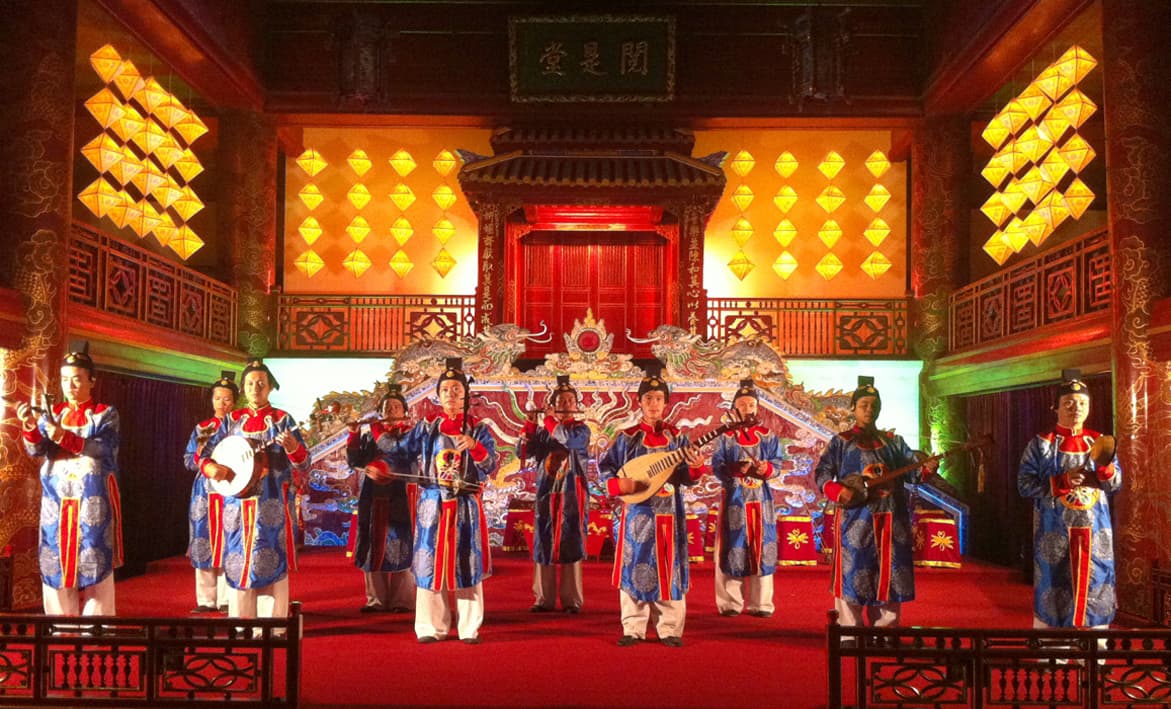Seven Types of Intangible Cultural Heritage to Be Catalogued from June 1, 2024
I would like to ask how many types of intangible cultural heritage have been inventoried since June 1, 2024? – Kim Ngan (Lam Dong)

07 types of intangible cultural heritage to be inventoried from June 1, 2024 (Image from the Internet)
Regarding this matter, LawNet responds as follows:
On April 16, 2024, the Government of Vietnam issued Decree 39/2024/ND-CP regulating measures for managing, protecting, and promoting the value of intangible cultural heritage in the Lists of UNESCO and the national list of intangible cultural heritage.
07 types of intangible cultural heritage to be inventoried from June 1, 2024
The inventorying of intangible cultural heritage is conducted for the following 07 types of heritage:
(1) Language and scripts include cultural expressions of the community, expressed through language, characters to convey information, transmit knowledge, memory, and the cultural and social values of the community;
(2) Folk literature includes the cultural expressions of the community, manifested through works created and practiced by the community including stories, legends, anecdotes, epics, fables, comic tales, folk songs, proverbs, folk songs, riddles, and other similar cultural expressions orally passed through many generations, reflecting the culture, customs, beliefs, and consciousness of the community to directly serve various activities in community life;
(3) Folk performing arts include the cultural expressions of the community, manifested through performance forms created and practiced by the community including music, singing, dancing, acting, and other forms of performances, originating from the cultural, spiritual, and production labor life of the community, serving the direct needs for cultural expression and enjoyment of the community;
(4) Social practices and beliefs include cultural expressions of the community, practiced regularly by the community through ceremonial activities, ways of expressing individual, community beliefs, or desires associated with important events, perceptions of the world, history, and memory;
(5) Traditional festivals include a collection of many cultural expressions of a ceremonial nature created and practiced by the community; these are practiced by the community cyclically in related cultural spaces to perform functions such as awareness of nature and society, personal education, behavior adjustment, communication between humans and nature and among humans, community entertainment, and ensuring historical continuity;
(6) Traditional craftsmanship includes cultural expressions manifested through the practice and creation of artisans and communities in a handcrafted form, with techniques, styles, decorations, arts, and materials having local elements, passed down from generation to generation to create unique products, bearing the cultural identity of the community;
(7) Folk knowledge includes cultural expressions of the community formed from the historical interaction between the community and the natural and social environment to adapt, survive, and express through experiences, knowledge, and skills to flexibly and harmoniously interact with nature and society.
(Clause 1, Article 6 Decree 39/2024/ND-CP)
Contents for inventorying intangible cultural heritage from June 1, 2024
The contents for inventorying intangible cultural heritage include:
- Identifying and determining the name of the heritage;
- Identifying and determining the type of heritage;
- Determining the location, and distribution range of the heritage; for intangible cultural heritage existing in multiple locations within the same province or centrally-administered city, specify to the ward, commune, commune-level town;
- Identifying and determining the subject of the heritage:
+ For the heritage subject being an individual: identifying their name, age, ethnicity, occupation, address, and other related information to the heritage practice process.
+ For the heritage subject being a community or group: identifying the names, ages, ethnicity, occupation, address, and other related information about the heritage practice process of those representing the community or group.
- Identifying the birth and existence process of intangible cultural heritage; expression, procedural practice, architectural works, artifacts, and related cultural spaces along with material and spiritual products created in the process of practicing intangible cultural heritage;
- Identifying and determining the current state of heritage practice, the ability to maintain, factors affecting heritage existence, and risks or reasons for the decline of intangible cultural heritage;
- Identifying, determining, and assessing the historical, cultural, scientific values, and role of intangible cultural heritage in the current community life;
- Proposing protection measures;
- Creating a bibliography of related materials of intangible cultural heritage, including publications, fieldwork survey materials, and other documents;
- Other legal regulations related to intangible cultural heritage.
(Clause 2, Article 6 Decree 39/2024/ND-CP)
More details can be found in Decree 39/2024/ND-CP which takes effect from June 1, 2024.
- Construction of works on road currently in use in Vietnam according to the latest regulations
- From January 1, 2025, an additional case where female employees in Vietnam may take up to 6 months off
- Regulations on the use of land for road safely corridor in Vietnam from 2025
- Guidelines for determining specific land prices using the land price adjustment coefficient method in Vietnam from August 1, 2024
- Maximum fine of 1 million VND for confusing customers regarding price listings in Vietnam
- From January 1, 2025, 13 cases where drivers must observe, slow down, or stop in Vietnam
-

- Conditions for Granting Operational Licenses for ...
- 18:00, 27/07/2024
-

- Conditions for Graduation Recognition and Issuance ...
- 17:30, 27/07/2024
-

- Regulations on Setting Construction Boundary Markers ...
- 17:00, 27/07/2024
-

- Construction of works on road currently in use ...
- 16:30, 27/07/2024
-

- Ministry of Health Requires Enhanced Responsibilities ...
- 16:04, 27/07/2024
 (1).png)
 Article table of contents
Article table of contents
